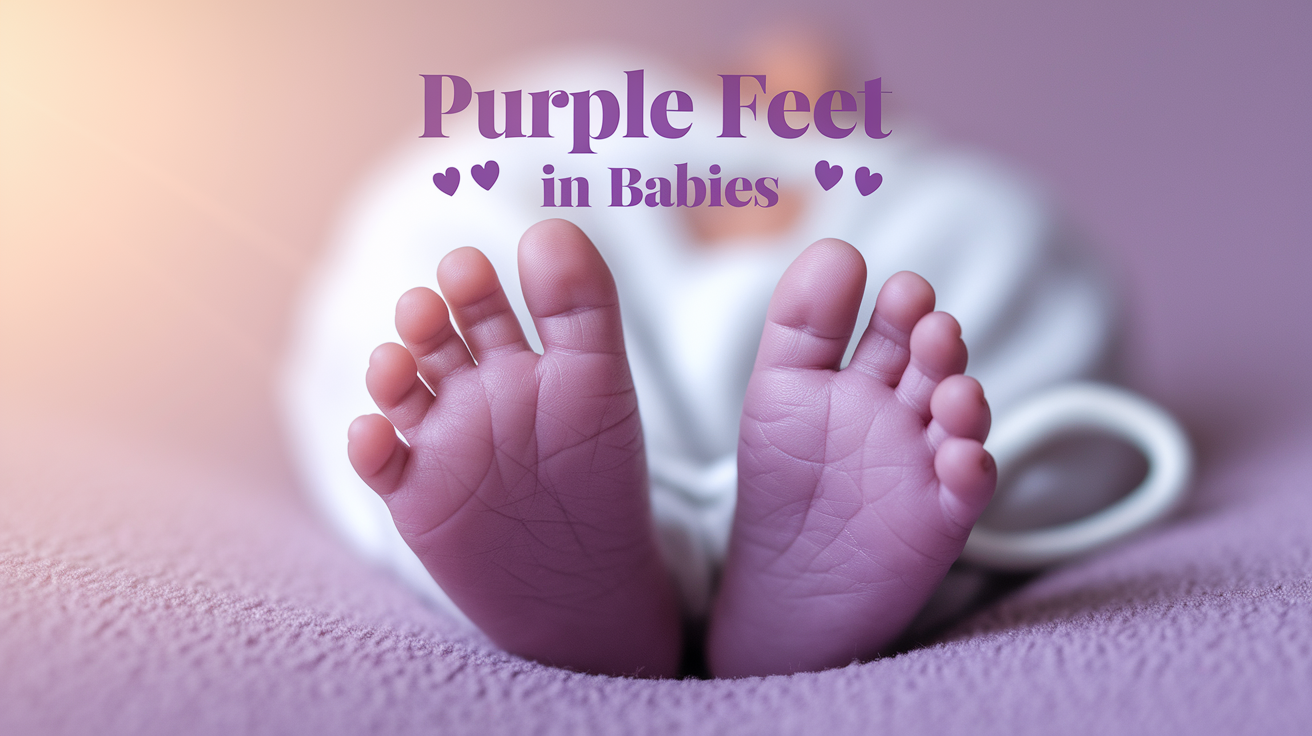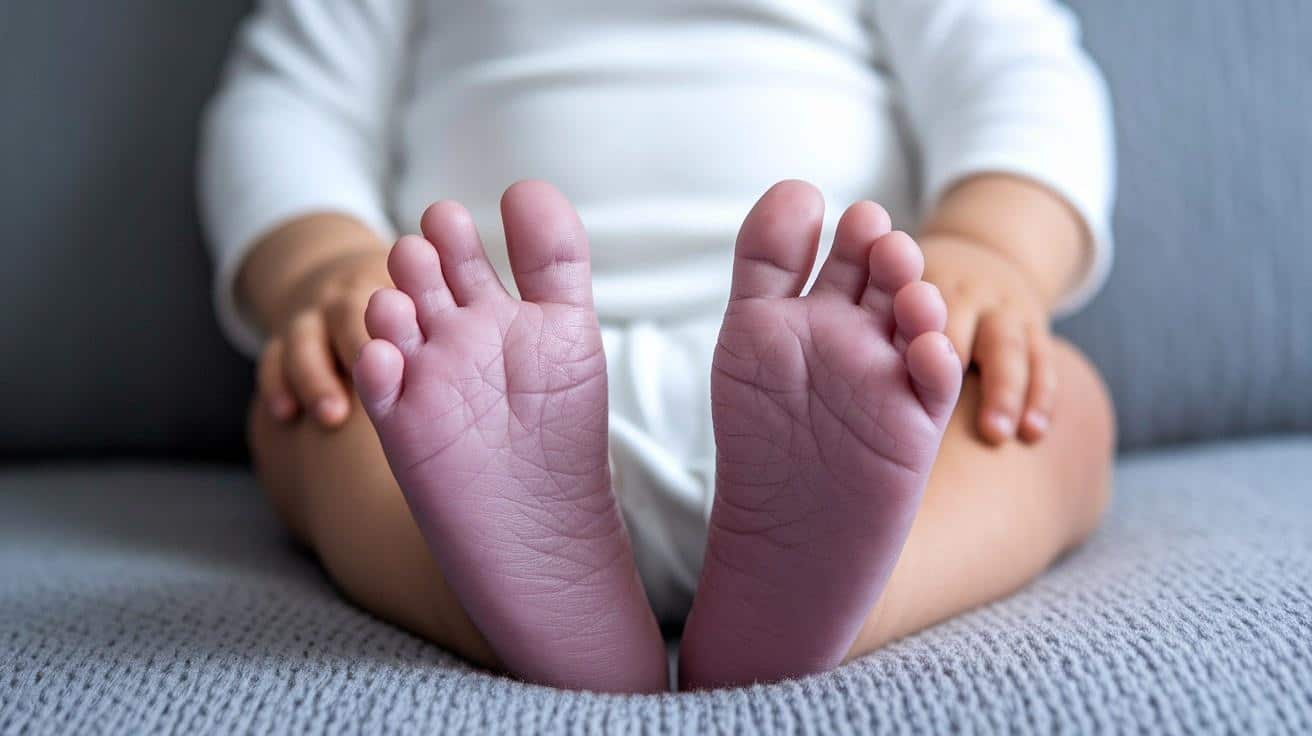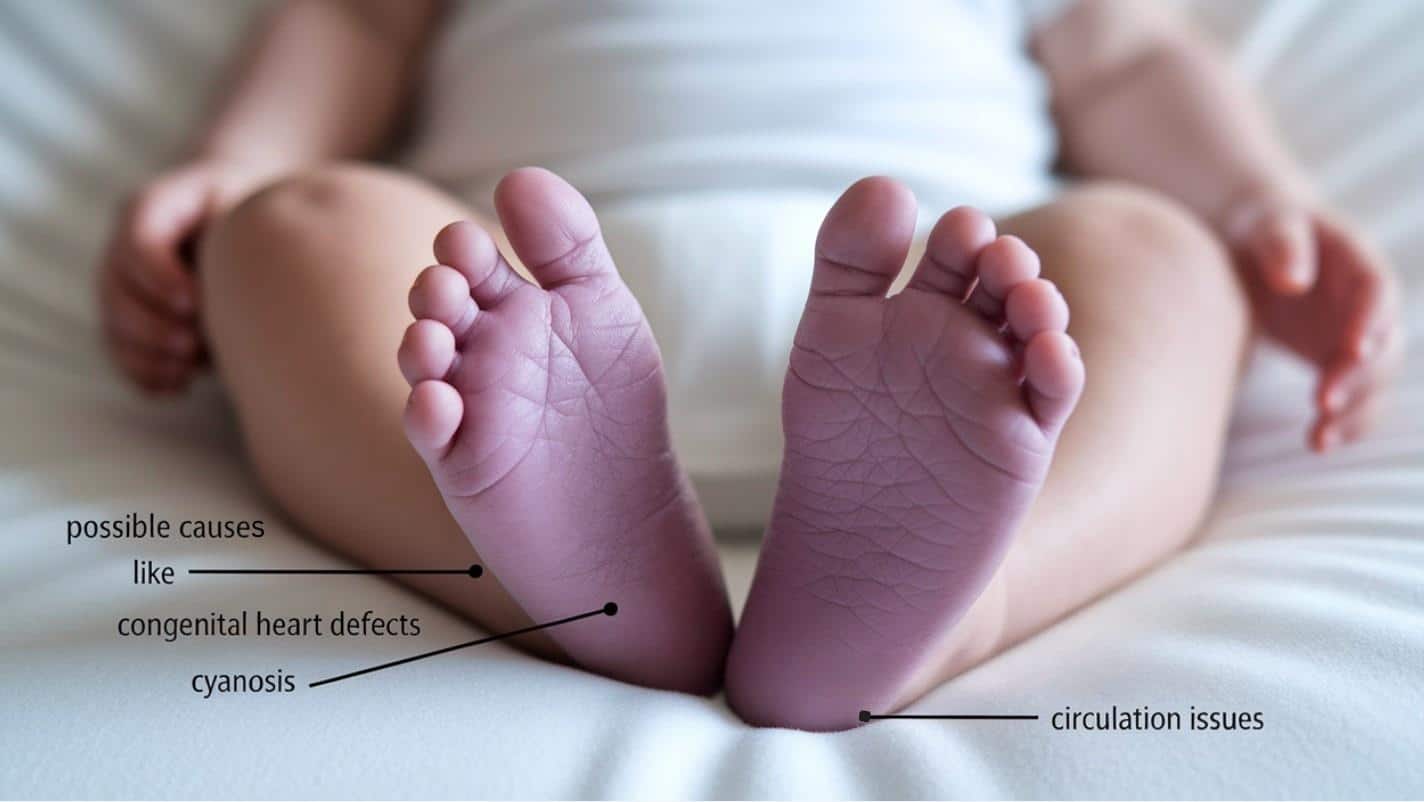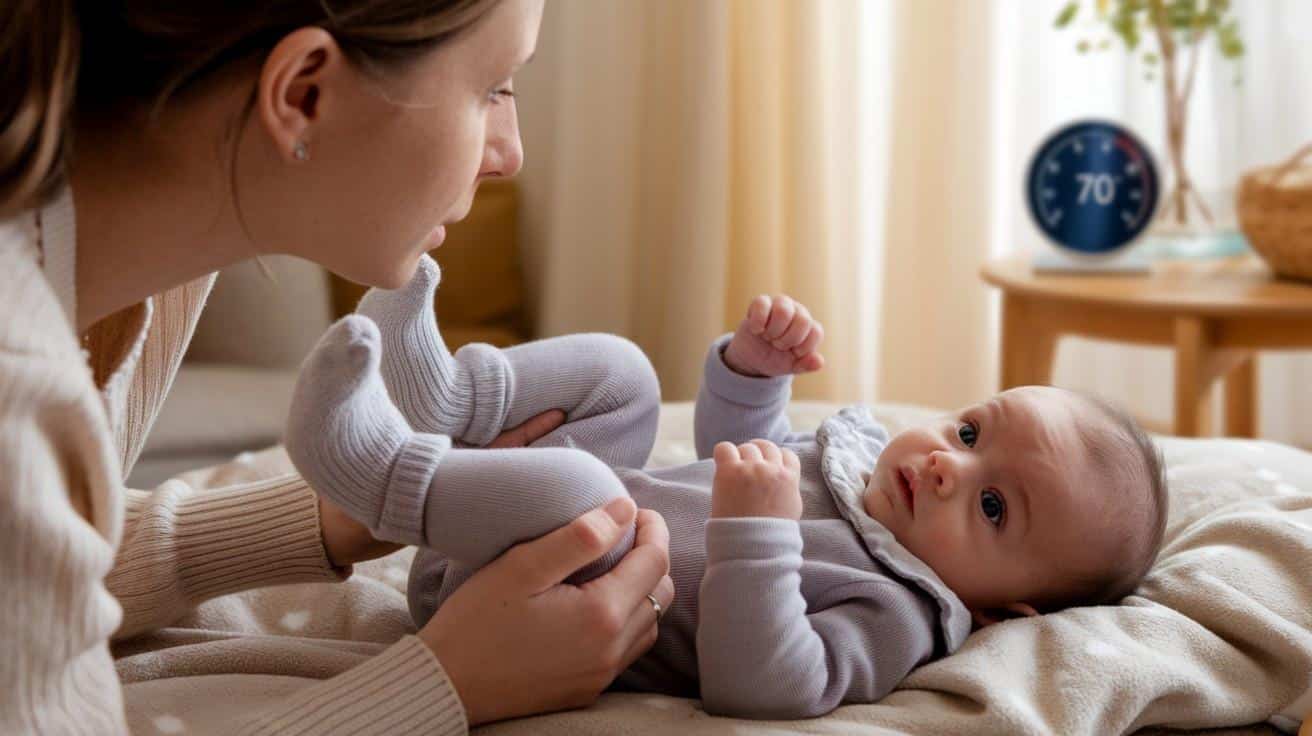
That tiny splash of purple on your baby’s toes can stop a parent’s heart mid-beat. When we notice unusual coloration in our little ones, our protective instincts are immediately triggered.
Purple feet in babies, while often harmless and related to normal temperature regulation, can sometimes indicate underlying health issues that require attention. The phenomenon occurs because babies’ circulatory systems are still developing, causing blood to pool in their extremities.
Did you know that newborns’ blood vessels take up to 6 months to mature fully? This developmental timeline explains why temporary color changes are common in the first months of life.
Parents must understand the difference between normal color variations and concerning signs.
Temperature-related bluish tints typically resolve quickly with warming, while persistent discoloration might warrant medical evaluation.
Always trust your parental instincts when something seems off with your baby’s appearance—pediatricians would rather check a false alarm than miss something important.
Why Are My Baby’s Feet Purple?
Purple or bluish feet in babies typically result from their developing circulatory system, which prioritizes blood flow to vital organs over extremities, especially when cold.
This normal condition, called acrocyanosis, usually resolves when the baby warms up or as their circulation matures over time.
While temporary discoloration is typically harmless, persistent bluish coloring—particularly when accompanied by breathing difficulties, lethargy, or feeding problems—may indicate a more serious circulatory issue requiring immediate medical attention.
Parents should monitor their baby’s overall well-being and skin color changes.
They can usually resolve mild discoloration by warming the baby’s environment, gently massaging the baby’s feet, or adjusting the baby’s position to improve circulation.
When Is It Normal? Purple Feet in Infants

Purple discoloration of an infant’s feet, known as acrocyanosis, is often normal in newborns. This typically occurs due to immature circulation systems as babies transition from fetal to newborn circulation patterns.
Acrocyanosis commonly appears immediately after birth and during the first few hours to days of life.
The peripheral blood vessels in a newborn’s extremities are still developing their ability to regulate blood flow efficiently.
Temperature changes frequently trigger this response. When exposed to cooler environments, newborns conserve heat by redirecting blood flow to vital organs, resulting in bluish-purple discoloration of hands and feet.
During feeding or crying episodes, this color change may become more pronounced as blood is further redirected to support digestive processes or increased oxygen demands.
Most cases resolve spontaneously within the first week as circulation matures. However, persistent or spreading cyanosis, especially when affecting the central body, warrants immediate medical attention as it may indicate underlying cardiac or respiratory issues.
Common Causes of Baby Feet Turning Purple
Purple discoloration in a baby’s feet can be concerning for new parents, but it’s often normal and harmless.
Acrocyanosis, a common condition in newborns, causes bluish or purple discoloration of the hands and feet due to immature circulation systems. This typically resolves within the first few weeks of life.
Poor circulation may also cause temporary purple coloration, especially in the extremities where blood flow is naturally less robust. This can be more noticeable when babies are exposed to cooler temperatures.
Environmental factors play a significant role as well. Cold exposure can trigger blood vessels to constrict, reducing circulation and creating a purple hue. Tight clothing, socks, or overly snug swaddles may restrict blood flow, causing discoloration.
When babies cry or strain during bowel movements, blood pressure changes can temporarily affect circulation, resulting in color changes to the extremities.
Acrocyanosis remains the most prevalent cause of purple feet in otherwise healthy newborns.
Signs That Indicate a Serious Problem
Purple discoloration spreading beyond the feet can be a concerning symptom that shouldn’t be ignored. This condition, often called acrocyanosis when limited to extremities, may indicate circulatory problems or oxygen deprivation when it extends further up the body.
When purple discoloration appears alongside lethargy, breathing difficulties, or feeding issues, it requires immediate medical attention. These combined symptoms could signal serious underlying conditions affecting vital organ systems.
Persistent discoloration without an obvious cause is particularly troubling. While temporary color changes can occur from cold exposure or position, discoloration that remains despite warming or repositioning warrants prompt evaluation by healthcare professionals.
The body’s color provides important clues about circulation and oxygenation. Purple or bluish tints often indicate that tissues aren’t receiving adequate oxygen, which can impact essential bodily functions and development if left untreated.
Most common sign: Bluish-purple color that doesn’t resolve with warming
Medical Conditions Linked to Purple Feet in Babies

Purple feet in babies, medically known as acrocyanosis, can indicate several underlying conditions. Cyanosis occurs when blood lacks sufficient oxygen, causing the skin to appear blue-purple, especially in the extremities.
Congenital heart defects may cause inadequate blood oxygenation, resulting in persistent discoloration.
This requires prompt medical evaluation, as some heart conditions require immediate intervention.
Blood clotting disorders can restrict circulation to the feet, creating a purple appearance. These conditions may be inherited or develop after birth.
Raynaud’s phenomenon, while rare in infants, causes blood vessels to narrow excessively in response to cold or stress. This temporary condition creates distinctive color changes in the extremities.
Most cases of slight bluish discoloration in newborns are normal and resolve with warming; however, persistent or severe purple discoloration warrants immediate medical attention to rule out serious conditions requiring treatment.
What to Do if You Notice Purple Feet?

Purple discoloration in feet can be concerning, especially in infants and young children. Understanding when it’s normal and when to seek medical attention is crucial for proper care.
1. Tips for home observation and documentation
Document when you notice purple discoloration in your baby’s feet. Take clear photos in good lighting, and note the room’s temperature and how your baby is dressed.
Record the duration of the discoloration and any associated symptoms, such as fussiness or difficulty feeding. This information will be valuable if you need to consult with a healthcare provider.
2. How to warm your baby properly
Never use direct heat sources, such as heating pads or hot water bottles, on your baby’s feet.
Instead, dress your baby in appropriate layers based on the ambient temperature.
Use breathable, warm socks and ensure that clothing isn’t too tight, which could restrict circulation. Room temperature should be comfortable—typically between 68-72°F (20-22°C).
3. When to call your pediatrician
Contact your doctor immediately if purple feet are accompanied by breathing difficulties, extreme lethargy or if the discoloration doesn’t improve with warming. Seek urgent care if the purple color extends beyond the feet or if your baby has a fever.
Remember that some temporary bluish discoloration in newborns’ hands and feet (acrocyanosis) is normal, but persistent purple coloration requires medical attention.
What Pediatricians Might Check For?

Pediatricians perform comprehensive assessments to monitor children’s health and development.
They routinely measure oxygen saturation using a small device called a pulse oximeter, which is placed on a finger or toe to ensure adequate oxygen levels in the blood.
This non-invasive test helps detect respiratory or cardiac issues that might otherwise go unnoticed.
During circulatory and heart examinations, doctors listen carefully to heart sounds, check pulse rates, and observe skin color and capillary refill time. These assessments help identify potential cardiovascular concerns such as murmurs, irregular rhythms, or poor circulation.
When initial screenings raise concerns, pediatricians may recommend blood work to check for infections, anemia, or metabolic disorders.
These routine screenings form the foundation of preventive pediatric care, allowing doctors to catch and address health issues before they become serious problems.
Preventive Measures and Care Tips
When done correctly, swaddling provides comfort and security for newborns. To do so, use a lightweight blanket in a diamond shape, fold the top corner down, place the baby on its back, and wrap the sides snugly but not tight.
Maintaining proper foot temperature helps prevent discomfort. Layer thin cotton socks under slightly larger warm booties while removing extra layers indoors.
When monitoring temperature, check the baby’s neck and chest rather than hands or feet for an accurate assessment. Dress the baby in one more layer than you’d wear, and watch for signs of discomfort, like fussiness or flushed cheeks.
Special tip: For quick temperature checks, place a gentle kiss on your baby’s forehead—your lips are sensitive enough to detect concerning warmth.
To Sum It Up
A purple tint to the baby’s feet isn’t always cause for alarm. This common occurrence often results from normal circulation patterns in newborns and infants whose vascular systems are still developing.
Parents should observe other symptoms alongside purple feet. If your baby seems content, maintains normal body temperature, and the color returns quickly after gentle pressure, there’s likely no cause for concern.
If purple feet appear alongside lethargy, poor feeding, or breathing difficulties, seek medical attention promptly.
In cold weather, simply providing warmth through socks, gentle massage, or adjusting room temperature may resolve temporary discoloration.
Remember that occasional color changes in extremities are typically normal developmental phases that babies outgrow as their circulatory systems mature. When in doubt, documenting with photos can help healthcare providers assess any concerning patterns.
If you’re interested in more informational content on mothers and babies, feel free to click here and explore other blogs that you might enjoy.
